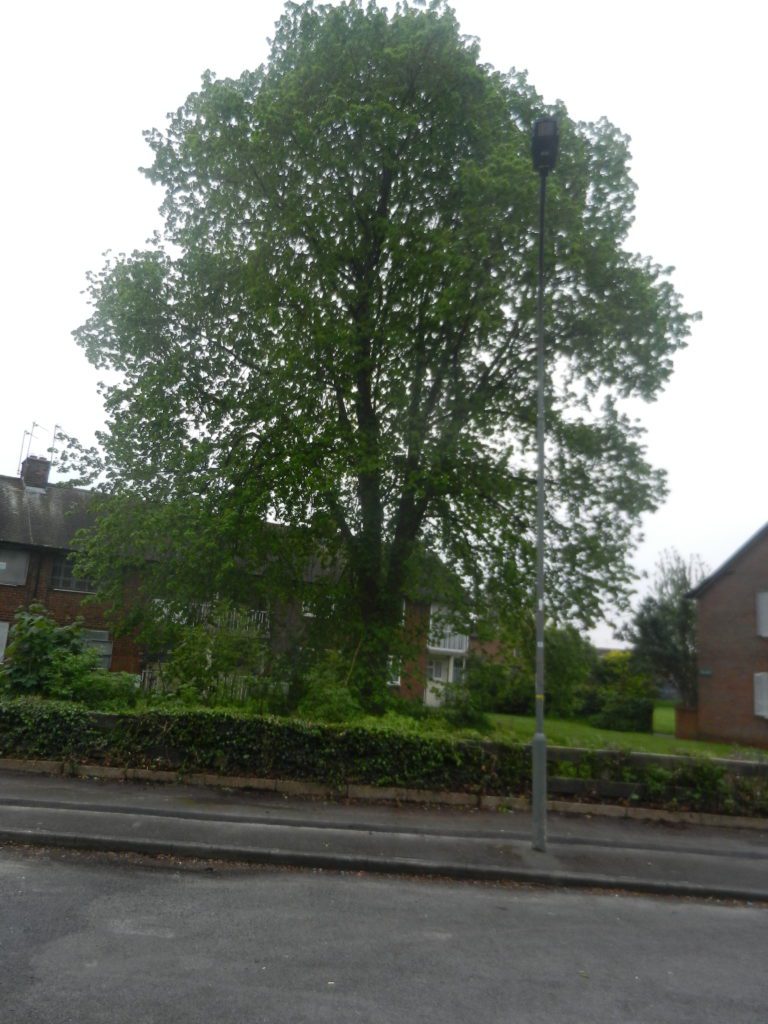
The photo above shows a mature lime tree on the site of Henson Villas in the south-east corner of Pearson Park, Hull. Incidentally, the ‘Villas’ comprise three blocks of flats, both ground and first floor. Except for one they are currently empty the tenants having been re-located ahead of demolition of the buildings, asbestos has also been removed by a specialist firm. It is a shame as these three blocks are a good example of the diversity of municipal accommodation built in the 1950s after the Second World War. They were built as one-bedroom flats for single women, young or old and in varying circumstances. Although not officially so, more recently they became a dumping-ground for troublesome tenants. A few of the women tenants had lived there for over 30 years.
Lime, as exampled here, can be a tall elegant tree, vertical rather than spreading, with a superficially ridged trunk of medium height and principal branches striking up at acute angles. After horse chestnut the lime is almost certainly the second most common tree planted in Hull’s municipal parks, this often the case elsewhere. In Pearson Park some of the limes were planted in the 1860s in groups of three, a seemingly unwise thing to do as each root system will be in fierce competition with the other two for ground water and nutrients. However, I am informed that this is an aesthetic thing with odd number groups more pleasing/natural than even.
Lime trees have now produced their clusters of white flowers in spring, these now turning to seeds. Apparently lime trees are unusual in Nature being hermaphrodite (another one to add to the gender identity variations currently determining social policy – but it does save all the bother and expense of courting!). Lime leaves are glossy vibrant green, heart-shaped but slightly slumped on one side; the hairy underside making them looked two-tone when blowing in the wind. The leaves attract a lot of aphid species which normally do not harm the tree and which provide a food source for some insects and birds. The aphids drop ‘honey-dew’ making pavements below trees seem sticky.
Lime is a native species.
(to be continued.)